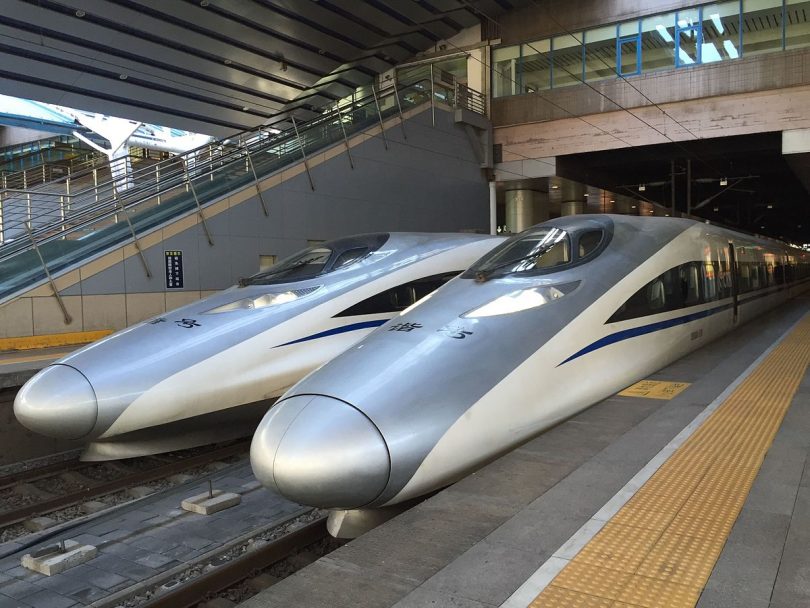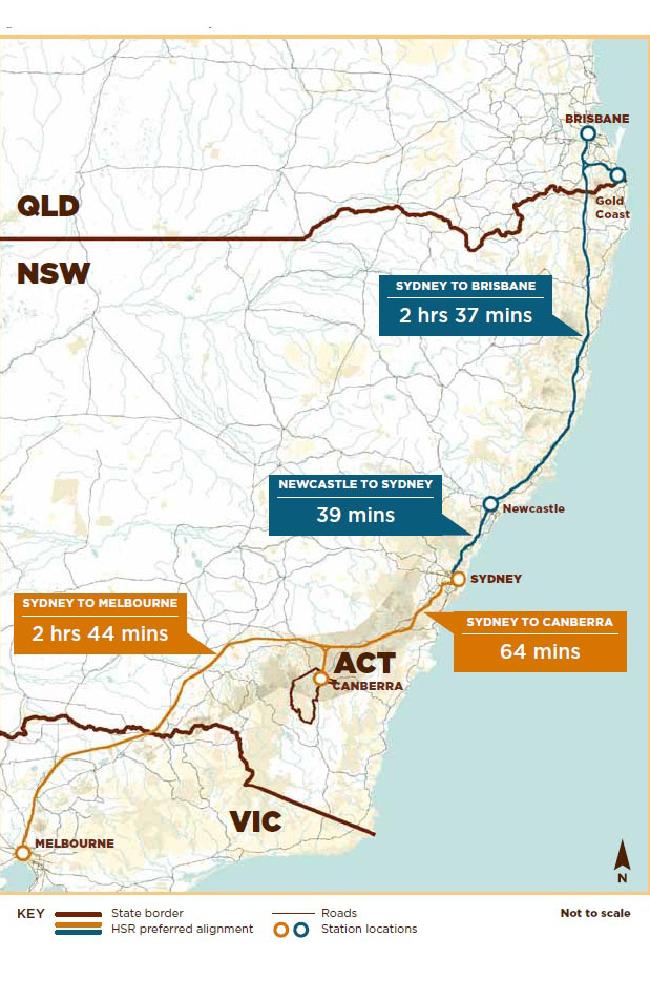
Chinese high-speed trains: Labor Government would work with international proponents with experience in building and operating high-speed rail.
Labor has put high-speed rail back on the election agenda with a $1 billion pledge to begin securing the corridor for a link from Brisbane to Melbourne via Sydney and Canberra.
Transport and infrastructure spokesperson Anthony Albanese says a Shorten Labor Government will create a High-Speed Rail Authority that will work with the governments of Queensland, New South Wales, Victoria and the Australian Capital Territory to finalise track alignment and commence land acquisitions.
It will also finalise an updated business case for the project in consultation with Infrastructure Australia and work with the private sector including international proponents with experience in building and operating high-speed rail.
The former Labor government completed a feasibility study for the project in 2013, which identified a 1748km route and found the project was not only viable, but would return more than $2 in public benefit for every dollar invested, according to Mr Albanese.
He said an independent panel including former deputy prime minister Tim Fischer and the Business Council of Australia’s Jennifer Westacott recommended the creation of a High Speed Rail Authority but subsequent Coalition governments failed to act on this.
Mr Albanese said high-speed rail would revolutionise interstate travel and regional development in Australia, allowing passengers to move between capital cities in as little as three hours at speeds of up to 350km/h.
The project would also be an economic game-changer for communities along its path, including the Gold Coast, Grafton, Coffs Harbour, Port Macquarie, Newcastle, the Central Coast, Southern Highlands, Canberra, Wagga Wagga and Shepparton.

“It would bring these communities closer to capital cities, allowing for increased commuting while also strengthening the case for regional business investment,” Mr Albanese said.
“As Australia’s strong population growth continues in coming years, the already established case for high-speed rail will become more compelling. If we start to acquire the corridor now, we will protect it from development and thereby minimise costs.
“Indeed, in 2017 Infrastructure Australia calculated that early acquisition of the corridors for seven rail projects on its Infrastructure Priority List, including high-speed Rail, would save the public $11 billion in land acquisition and construction costs.”
Route maps so far for high-speed rail proposals show a station to the north of Canberra with a spur line to the capital. Canberra Airport also has proposed a station there to create an integrated transport hub.
A land value capture model for property development has been proposed as a way to finance the expected $100 billion project but it will still need significant government support.
A private consortium Consolidated Land and Rail Australia (CLARA) – which includes Japanese company Hitachi, infrastructure services company Cardno and the CSIRO – plans to use the land value capture model along the route to fund and build eight inland ‘smart’ cities in conjunction with a high-speed rail network connecting Sydney and Melbourne via Canberra.
CLARA believes the 35-year eight cities project can deliver critical mass in passenger numbers for the HSR network, as well as unlock the significant financial benefits to the Australian economy of inland city development.
It says it is agnostic about technology and will choose the best on offer if its proposal is accepted. CLARA says research shows that there are at least four viable, currently available technologies that would enable CLARA to achieve its faster rail projections, including magnetic levitation and traditional systems.
CLARA’s proposal has three distinct stages which it says are commercially viable in their own right. The first two to be built concurrently are Melbourne to Greater Shepparton with two CLARA cities and then Sydney to Canberra with three CLARA cities.
It says the Sydney to Canberra corridor will deliver 501,000 new dwellings over 35 years, accommodating about 1.2 million people. The Melbourne to Shepparton corridor involves 334,000 new dwelling allotments accommodating 801,000 people.
But the Greens in their policy for high-speed rail say the project should be totally publicly funded and not handed over to property developers.
Original Article published by Ian Bushnell on The RiotACT.






